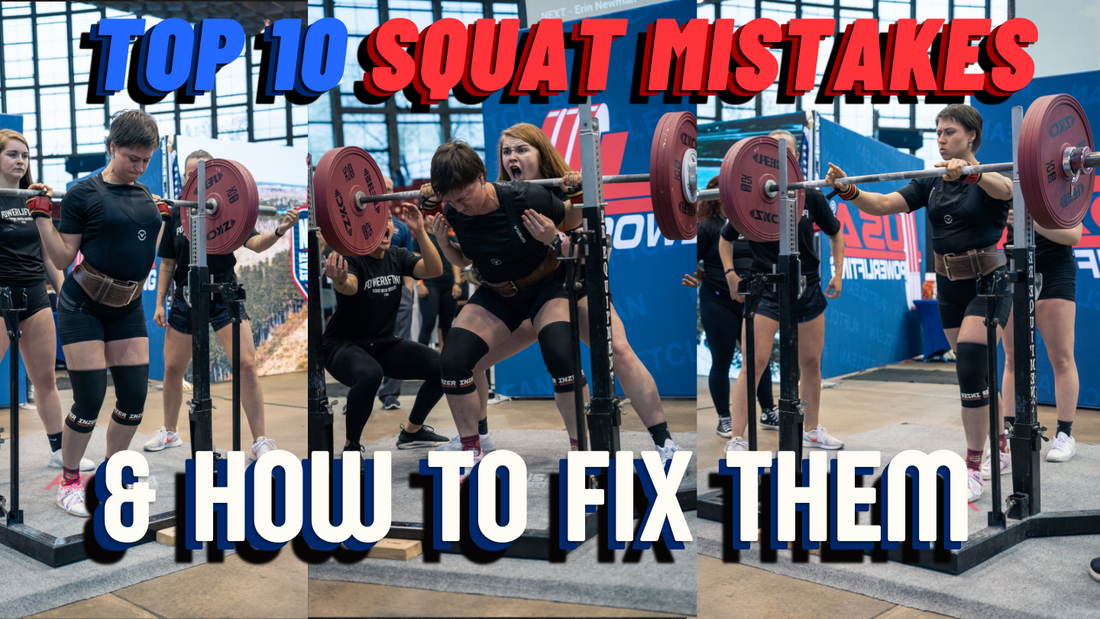
13 Common Squat Mistakes (And How to Fix Them)
Share
Today we’re breaking down one of the most fundamental lifts in the gym: the squat. If you're a beginner, intermediate, or just someone who wants to stop squatting like a baby giraffe and start squatting like a beast, this one’s for you.
Here are the most common squat mistakes I see—and how to fix each one so you can squat safer, heavier, and with more confidence.
1. Gripping the Bar Way Too Wide
Let’s start from the top—literally. A super common beginner mistake is gripping the barbell too wide. Ideally, you want to place your hands where the center knurling ends and the rough part of the bar begins. That’s your sweet spot. The closer your hands are (within shoulder comfort), the tighter your upper back gets, and the more stable your squat becomes.
If you're tight in the shoulders or have mobility limitations, just go as close as comfortably possible. You can adjust this over time with mobility work.
2. Rack Height Is Too High
If you’re tiptoeing to unrack the barbell, your squat rack is too high. You should be able to stand up straight under the bar and take a few solid steps back without dancing on your toes. Lower the rack one notch if needed—yes, even if it feels “off” at first. Stability over ego.
3. Uneven Hand or Foot Placement
Symmetry matters. If one hand is further from the center than the other, your bar placement will be crooked. Same goes for your feet—if one’s turned out more or further forward than the other, you’re asking for imbalance and potential injury. Use the bar’s center knurling or marks as guides, and film yourself from behind if you’re unsure.
4. Squatting in Running Shoes
You know I love my running shoes—for literally everything except squatting.
Running shoes are squishy. That squishiness might be great on pavement, but under a barbell, it’s like squatting on marshmallows. Just don’t.
What to wear instead:
- Weightlifting shoes (hard sole, raised heel)
- Deadlift slippers (flat sole, close-to-ground feel)
- Barefoot or in socks, if your gym allows
And no, lifting in socks doesn’t protect your toes if a plate falls. So always be mindful.
5. Not Squatting to Depth
A squat that doesn’t go below parallel isn't really a full squat. But I get it—mobility, balance, and body mechanics can make depth tricky. If your heels lift off the ground when you go low, your ankles and hips probably need some love.
Quick fixes:
- Stretch regularly (especially hips and calves)
- Use squat shoes or place small plates under your heels
- Practice box squats to build confidence
6. Skipping Wrist Wraps When You Need Them
Wrist pain? Barbell digging into your tiny wrists? Just wrap them, babe. Especially if you’re squatting low bar and your wrists take on a lot of pressure.
I use stiff, aggressive wrist wraps—especially for my older clients or those with smaller frames. They’re not a crutch; they’re armor. Own it.
7. Not Understanding the Setup
Squatting starts before the bar leaves the rack.
- Approach the bar and grip it evenly.
- Get under it with your feet directly beneath you.
- Place it either on your upper traps (high bar) or across your rear delts (low bar).
- Stand tall, brace your core, and walk back with intention—two solid steps, no more.
From there, keep your torso tight and move the bar in a straight vertical line—not forward, not backward.
8. Using Just One Stance (And Never Experimenting)
There's no single “correct” squat stance. Your femur length, torso ratio, hip anatomy, and ankle mobility all affect what works best for you. So experiment!
Try:
- Narrow stance vs. wider stance
- Toes slightly turned out vs. more forward
- High bar vs. low bar placement
- Deep hinge vs. more upright torso
Use a mirror or camera and see where you feel strongest and most stable. Your best squat is waiting to be discovered.
9. Not Using Safety Bars
You know those metal arms or orange straps on the rack? Use them. If you're squatting alone and something goes wrong, these save your spine (and your ego).
Adjust them to just below your full depth. That way, if you fail a rep, you can dump the bar safely without drama.
And please don’t fear “the cage.” The power rack is your best friend—especially for beginners. It’s not a prison; it’s a fortress.
10. Not Having a Spotter (When You Need One)
If you’re going near your max and don’t have safety bars, get a spotter. Even if you never end up needing them, having someone there lets you lift with full confidence. Ask a trainer, a friend, or another gym-goer. Powerlifting isn’t an ego thing—it’s a community.
11. Forgetting to Breathe and Brace
Before each rep, take a deep belly breath, brace your core (like someone’s about to punch you), and hold that tension through the lift. Release at the top. That bracing protects your spine and gives you power.
If you’re using a lifting belt, brace against it—not because of it.
12. Being Afraid to Fail
Failure is part of learning. I show my failed lifts on YouTube because I want you to see that no one PRs every session. If you’ve never failed, you’ve never tested your limits. Just make sure your setup allows you to fail safely, and treat each “miss” as data, not defeat.
13. Not Wearing a T-Shirt
Okay, this might sound minor, but bare skin + aggressive knurling = ouch. Protect your traps. Wear a cotton t-shirt when squatting with a barbell. Your skin will thank you.
Final Thoughts
Squatting is a skill. It takes practice, patience, and a little bit of nerdy experimentation. The goal is progress—not perfection. And don’t let fear of doing it “wrong” stop you from getting under the bar. Every powerlifter, including me, started somewhere.
✨ Ready to Take your Squat to the Next Level?
If you’re ready to stop feeling weak, stiff, or unsure in your body—and want to build real strength and confidence without injury or intimidation—I’d love to work with you.
Together, we’ll create a plan that works for your lifestyle, your level, and your goals.
Because strength training isn’t just for competitive athletes.
It’s for anyone who wants to get strong.
